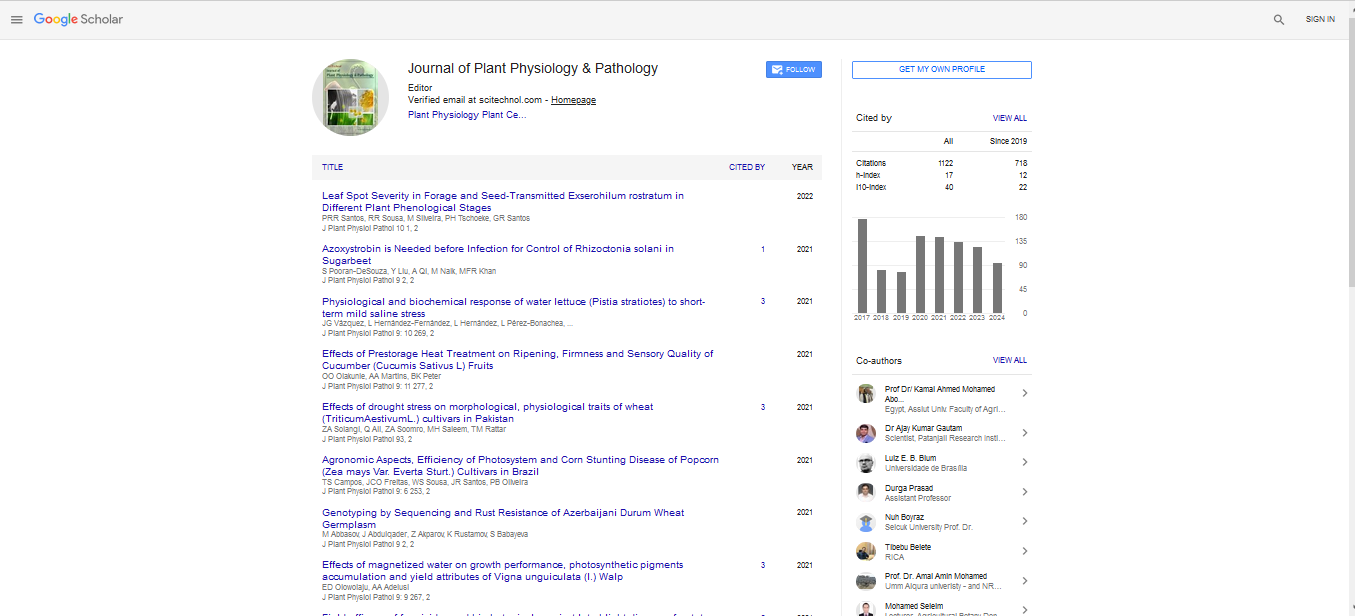Electrical signaling characterization of BT and Non-BT cotton under Aphis gossypii attack
Jessica K.S Pachu
Luiz de Queiroz College of Agriculture, Brazil
: J Plant Physiol Pathol
Abstract
Plant electric signals such as action (AP) and variation (VP) potentials triggered by herbivory are complex and may stimulate the activation of plant multiple defenses. We characterized the electrical signaling on cotton expressing Bacillus thuringiensis (or BT) toxins [variety WideStrike®] and its non-Bt isoline [variety FM 993] infested with two densities of Aphis gossypii Glover (Hemiptera: Aphididae) in alternate dark – light cycles. The plants were kept in a Faraday cage. Signal measurement was performed on the surface of the plant using electrodes. Non-infested plants by the aphid issued few VP and did not produce any AP. The highest VP number (n) on BT cotton plants occurred during the interval of 0‒12 h (n= 7) with 30 aphids/plant; 0‒12 h (n= 4) and 60‒72 h (n= 7) with 60 aphids/plant. On Bt cotton the highest amounts of signaling were concentrated 12 hours after aphid infestation. Our results revealed that different emission patterns of VP between light and dark periods were observed on non-Bt and Bt cotton plants kept in the densities of 30 and 60 aphids/plant, respectively. In both cases, the plants emitted more VP during the light period than dark period.
Biography
Jessica K.S Pachu has experience in Agroecology, with emphasis in Agricultural Entomology, working mainly on the following subjects: biological pest control, plantinsect interaction, plant electrophysiology and biotic stress. In her PhD she is studying the multiple effects of A. gossypii, natural enemies and a systemic molecule on the electrophysiological responses of Bt and non-Bt cotton and other crops.
E-mail: jessicapachu@usp.br
 Spanish
Spanish  Chinese
Chinese  Russian
Russian  German
German  French
French  Japanese
Japanese  Portuguese
Portuguese  Hindi
Hindi 
